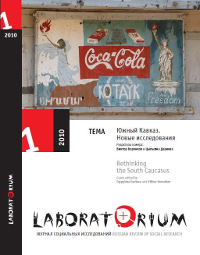“Reconstituting” Religion: Neo-Paganism in Armenia
Main Article Content
Abstract
Like other new religious movements, Armenian neo-paganism shifted from exploring alternatives to Soviet ideology to searching for a national religious identity and spiritual salvation. The movement’s organization was founded in 1991 by Slak Kakosyan, a returned exile who also wrote the movement’s central book. It is loosely organized, but has up to 100 members and several hundred followers. The neo-pagans draw on—and reinterpret—pre-Christian deities, Armenian nationalist mythology, and ancient historiography. They have invested the reconstructed Hellenistic temple of Garni for their rituals. Striving for national religious unity, they also incorporate elements of Armenian Christianity into their beliefs and practices. The article describes the Armenian neo-pagan movement, drawing on interviews and ethnographic observation. In Russian, summary in English.
Keywords
Abstract 182 | PDF Full Paper (Русский) Downloads 76 PDF Extended Summary Downloads 69 HTML Full Paper (Русский) Downloads 262 HTML Extended Summary Downloads 69

